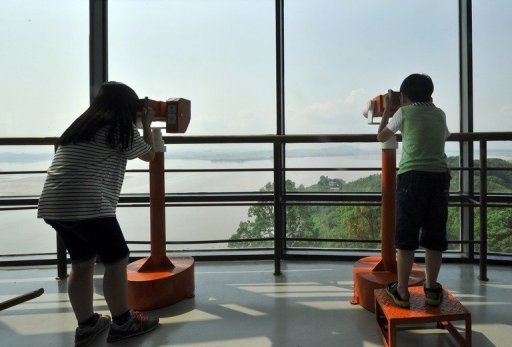North and South Korea reached a patchy agreement to hold a high-level meeting in Seoul, following marathon talks aimed at rebuilding trust after months of soaring tension and threats of nuclear war.
Sunday’s preparatory talks, held in the border truce village of Panmunjom, where the armistice ending the 1950-53 Korean War was signed, were the first between the two rivals for more than two years.
In a sign of the trust deficit that remains six decades after the armistice agreement, they dragged on deep into Monday morning as the two sides struggled to agree on a framework for a more substantive dialogue.
They concluded by settling for a two-day meeting in the South Korean capital beginning Wednesday, but with some confusion over precisely who would attend and what topics would be discussed.
Agreed topics for discussion in Seoul included the future of the Kaesong joint industrial complex that the North effectively shut down as the recent military tensions between the historic rivals peaked.
The resumption of South Korean civilian tours to the North’s Mount Kumgang resort and reunions between families divided since the Korean War will also figure, the separate statements said.
Sunday’s talks came about after an unexpected reversal from North Korea, which suddenly dropped its default tone of high-decibel belligerence and proposed opening a dialogue.
South Korea responded swiftly and positively by offering a meeting in Seoul between its Unification Minister and his North Korean counterpart, which Sunday’s talks in Panmunjom were meant to set up.
The two Koreas have not held ministerial talks since 2007.
In the end, it was unclear who exactly would attend, with the North and South statements vaguely alluding to “authorities” with ministerial-level responsibilities.
The move towards dialogue has been broadly welcomed–given the threats of nuclear war that were being flung around in April and May–but there is some general skepticism about Pyongyang’s intentions.
Some analysts have suggested the North is paying lip-service to the idea of talks to coincide with the weekend summit between US President Barack Obama and Chinese President Xi Jinping.
China, the North’s sole major ally and economic benefactor, has been under US pressure to restrain its neighbor and has pushed Pyongyang to engage in dialogue rather than seek confrontation.
The commercial nature of the Kaesong and Mount Kumgang projects, which both sides have agreed to address in Seoul, offers some scope for relatively pragmatic discussion.
Kaesong and Mount Kumgang were both significant sources of scarce foreign currency for North Korea, which is squeezed by UN sanctions imposed over its nuclear weapons program.
Operations at Kaesong were suspended after the North withdrew its 53,000 workers from the South Korean plants there in early April.
Seoul suspended tours to Mount Kumgang after a North Korean soldier shot dead a South Korean tourist there in July 2008.
South Korean President Park Geun-Hye took office in February with a promise of greater engagement with Pyongyang.
But she remains adamant that substantive dialogue on wider issues can only take place if the North shows some tangible commitment to abandoning its nuclear weapons program.
North Korea has been equally emphatic in declaring its nuclear deterrent is not up for negotiation.
It was the North’s nuclear test in February–and subsequent UN sanctions–that triggered the recent crisis, which saw Pyongyang threaten both the South and the United States with pre-emptive nuclear strikes.

COMMENTS
Please let us know if you're having issues with commenting.